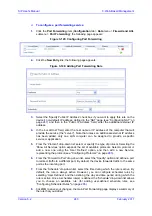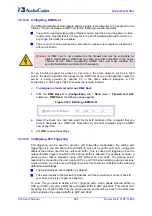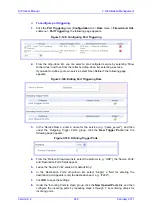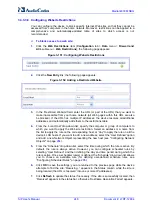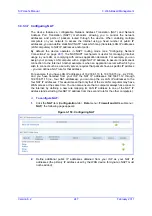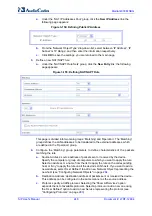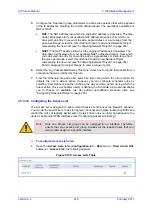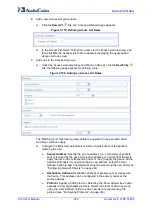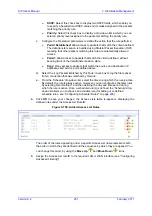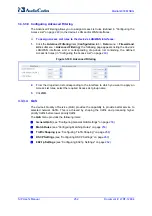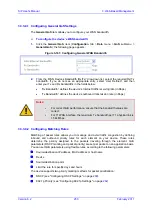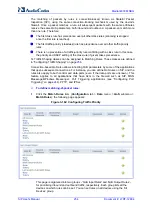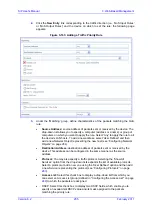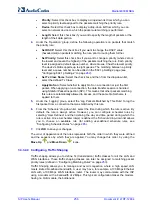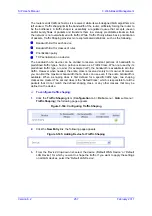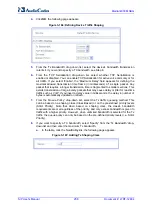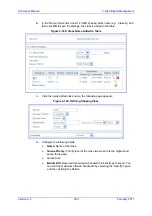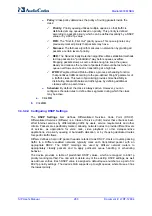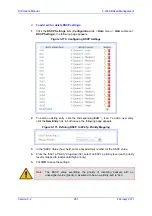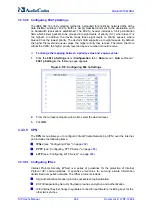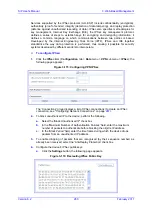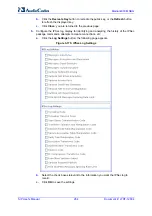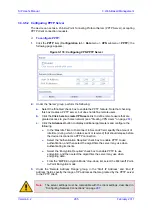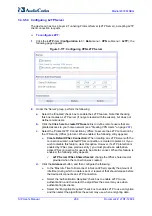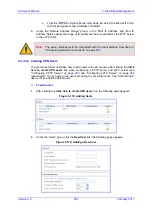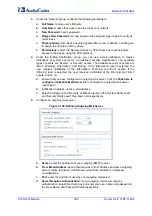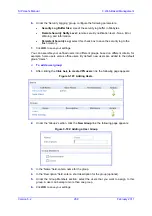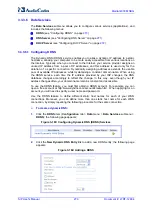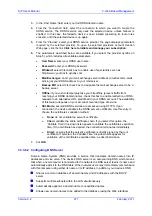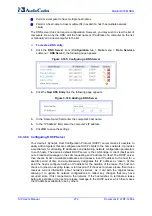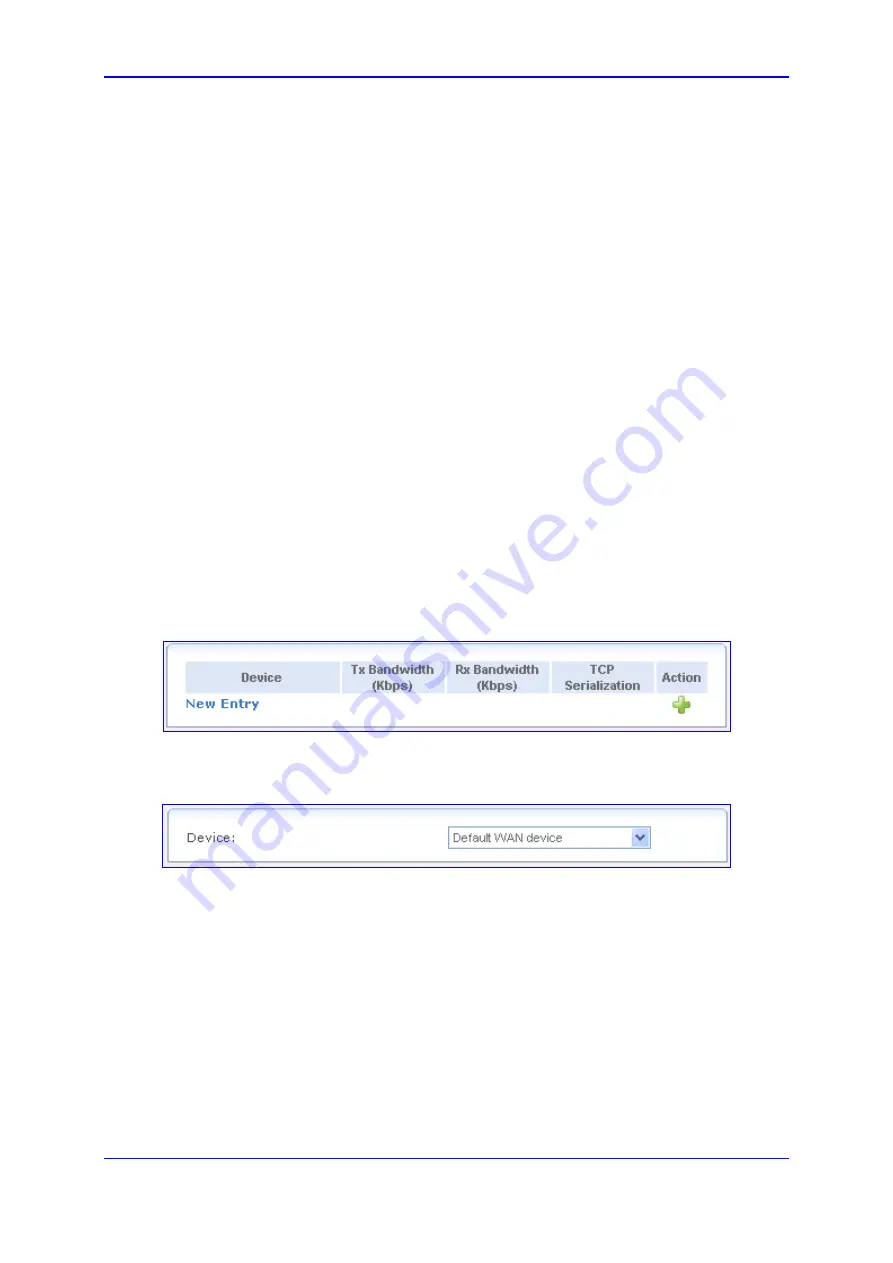
Version 6.2
257
February 2011
SIP User's Manual
3. Web-Based Management
The router sends traffic as fast as it is received, while its well-designed QoS algorithms are
left unused. Traffic shaping limits the bandwidth of the router, artificially forcing the router to
be the bottleneck. A traffic shaper is essentially a regulated queue that accepts uneven
and/or bursty flows of packets and transmits them in a steady, predictable stream so that
the network is not overwhelmed with traffic. While Traffic Priority allows basic prioritization
of packets, Traffic Shaping provides more sophisticated definitions, such as the following:
Bandwidth limit for each device
Bandwidth limit for classes of rules
Prioritization policy
TCP serialization on a device
The bandwidth of a device can be divided to reserve constant portions of bandwidth to
predefined traffic types. Such a portion is known as a Traffic Class. When not used by its
predefined traffic type, or owner (for example VoIP), the bandwidth is available to all other
traffic. However when needed, the entire class is reserved solely for its owner. Moreover,
you can limit the maximum bandwidth that a class can use even if the entire bandwidth is
available. When a shaping class is first defined for a specific traffic type, two shaping
classes are created. The second class is the 'Default Class', which is responsible for all the
packets that do not match the defined shaping class, or any other classes that may be
defined on the device.
¾
To configure traffic shaping:
1.
Click the
Traffic Shaping
item (
Configuration
tab >
Data
menu >
QoS
submenu >
Traffic Shaping
); the following page appears:
Figure
3-164: Configuring Traffic Shaping
2.
Click the
New Entry
link; the following page appears.
Figure
3-165: Adding Device for Traffic Shaping
3.
From the 'Device' drop-down list, select the device ('Default WAN Device' or 'Default
LAN Device') for which you want to shape the traffic. If you want to apply the settings
on all LAN devices, select the 'Default LAN Device'.
Summary of Contents for Mediant 800 MSBG
Page 2: ......
Page 366: ...SIP User s Manual 366 Document LTRT 12804 Mediant 800 MSBG Reader s Notes ...
Page 372: ...SIP User s Manual 372 Document LTRT 12804 Mediant 800 MSBG Reader s Notes ...
Page 390: ...SIP User s Manual 390 Document LTRT 12804 Mediant 800 MSBG Reader s Notes ...
Page 404: ...SIP User s Manual 404 Document LTRT 12804 Mediant 800 MSBG Reader s Notes ...
Page 616: ...SIP User s Manual 616 Document LTRT 12804 Mediant 800 MSBG Reader s Notes ...
Page 636: ...SIP User s Manual 636 Document LTRT 12804 Mediant 800 MSBG Reader s Notes ...
Page 652: ...SIP User s Manual 652 Document LTRT 12804 Mediant 800 MSBG Reader s Notes ...
Page 886: ...SIP User s Manual 886 Document LTRT 12804 Mediant 800 MSBG Reader s Notes ...

